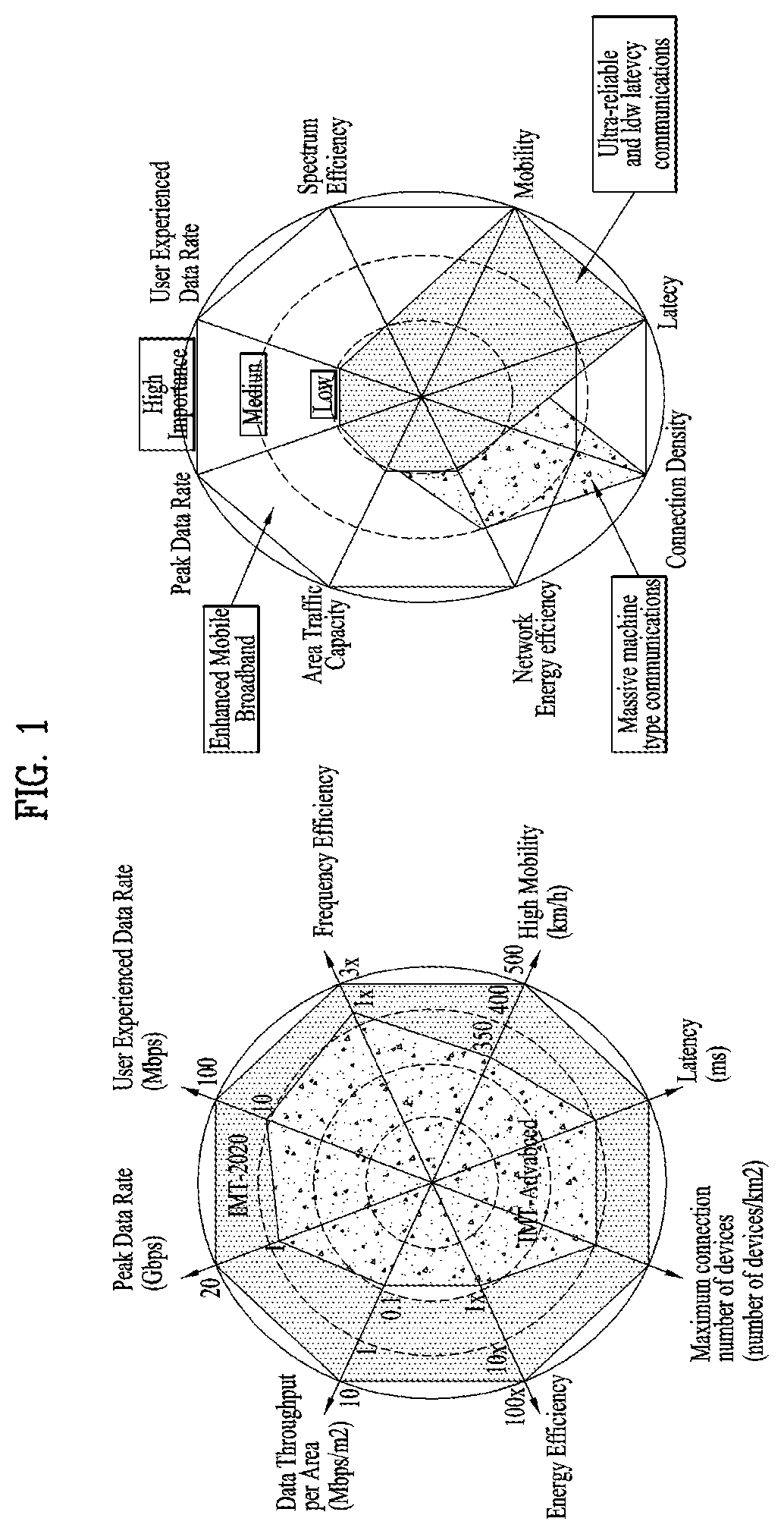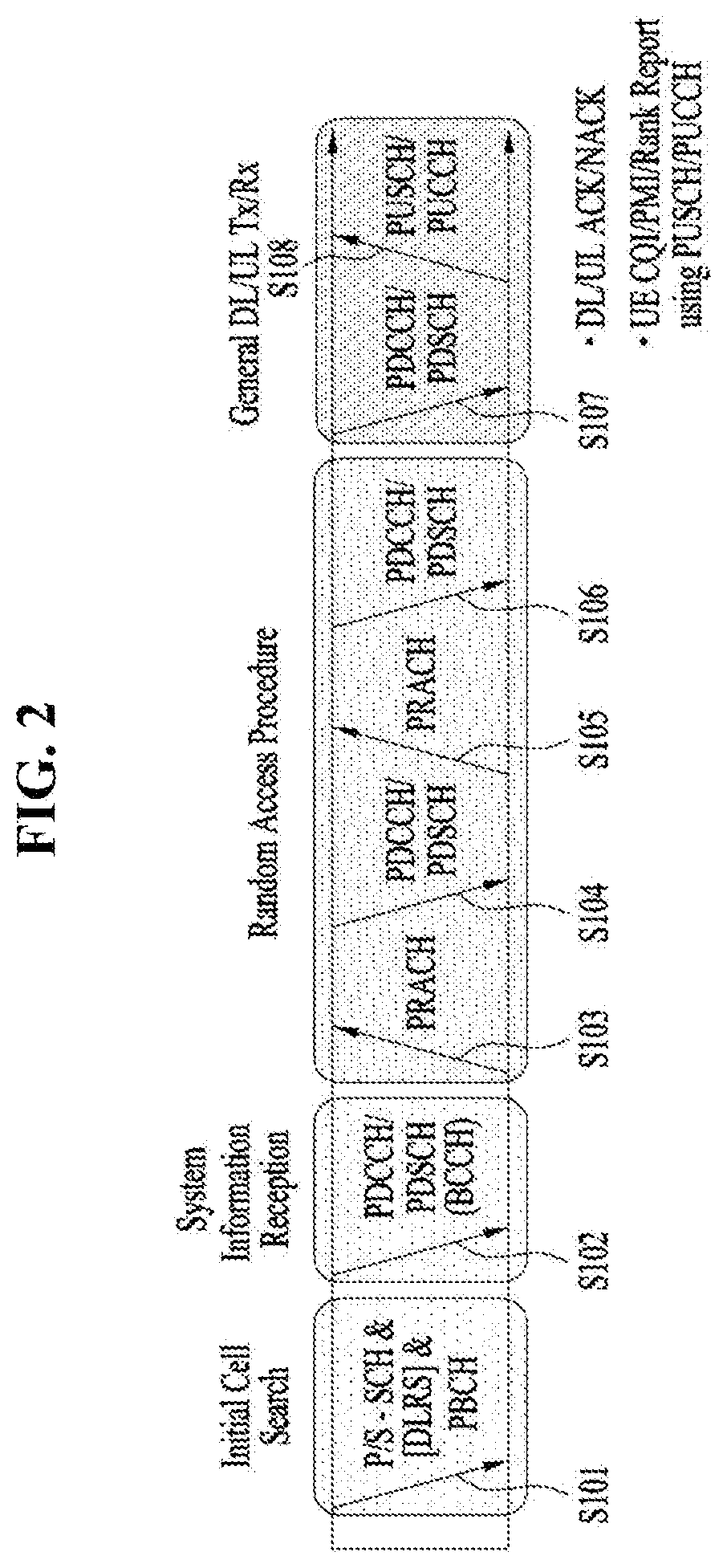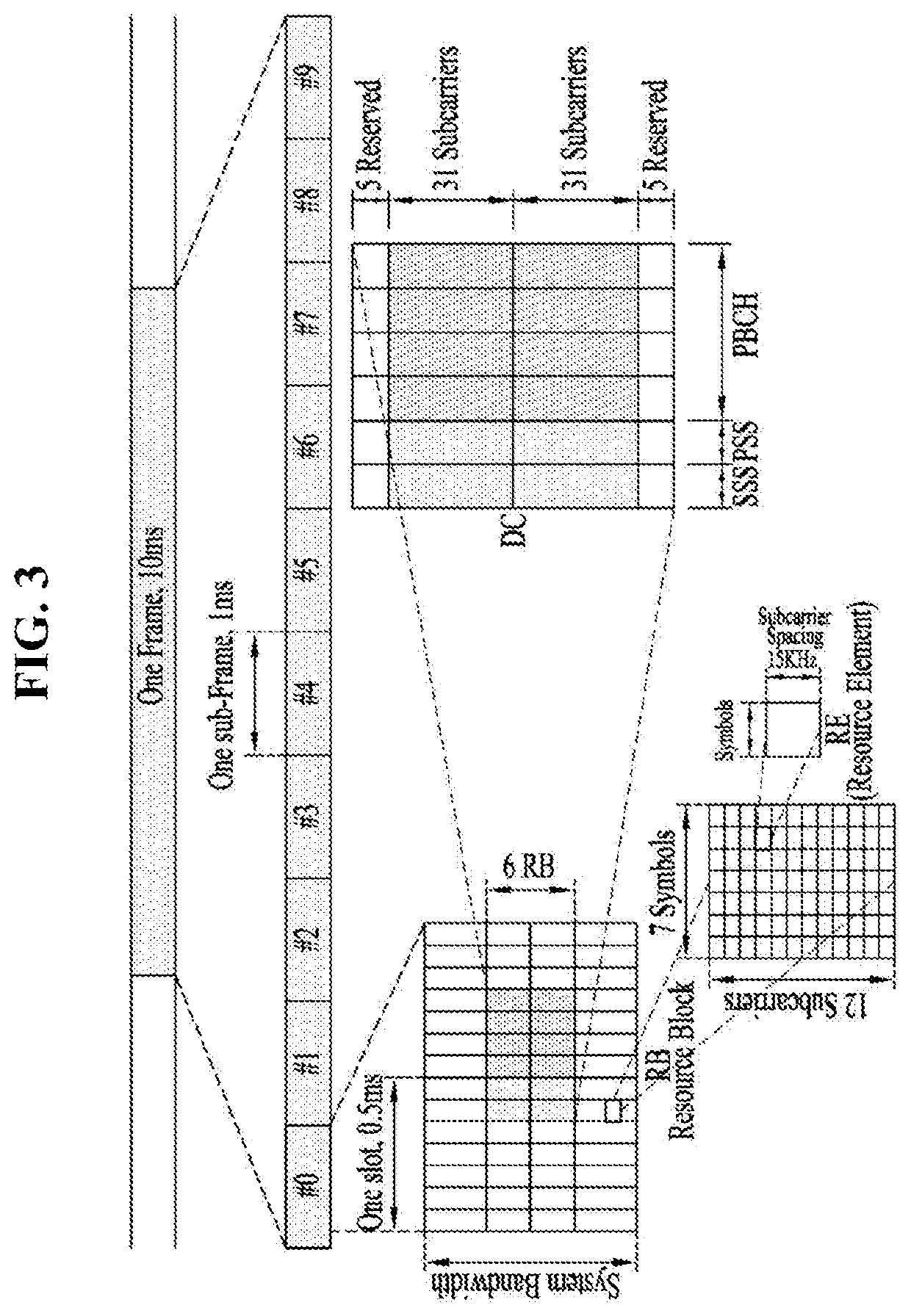Method for transmitting or receiving signals in wireless communication system and apparatus therefor
a wireless communication system and wireless communication technology, applied in the direction of pilot signal allocation, transmission path sub-channel allocation, electrical equipment, etc., can solve the problems of high mobility and high reliability, and the over-the-air (ota) latency requirement of the umtc service is very limited, so as to improve contention-based ul transmission and reception performance, the effect of increasing multiplexing capacity
- Summary
- Abstract
- Description
- Claims
- Application Information
AI Technical Summary
Benefits of technology
Problems solved by technology
Method used
Image
Examples
case 1
[0075] Maximum DMRS INDEX=Maximum Codeword INDEX
[0076]Case 1 is the case in which the total number of demodulation reference signal (DMRS) sequences is equal to the total number of contention resources (e.g., the total number of codewords). In this case, the DMRS sequences may be mapped to the contention resources in 1:1 correspondence. For example, the DMRS sequences and the contention resources may be mapped such that Codeword_INDEX=DMRS_INDEX. If the total number of codewords is 12, the total number of DMRS sequences is 12, and codeword 1 is selected according to a cell-radio network temporary identifier (C-RNTI), DMRS_INDEX 1 may be used.
[0077]In Case 1, if collision between the DMRS sequences does not occur, collision between codewords does not occur either. In addition, when the eNB decodes data transmitted by the UE through blind detection of a DMRS, the eNB may perform data decoding based on a codeword mapped to the detected DMRS without the need to perform blind detection o...
case 2
[0083] Maximum DMRS INDEX>Maximum Codeword INDEX
[0084]Case 2 is the case in which the total number of DMRSs is greater than the total number of contention resources (the total number of codewords in the above example). In this case, the DMRS sequences may be mapped to the contention resources in N:1 or 1:1 correspondence.
[0085]In the case of 1:1 mapping, all DMRS sequences may not always be used for 1:1 mapping of the DMRS sequences and the contention resources. For example, assuming that N=(Maximum DMRS_INDEX) / (Maximum Codeword_INDEX), selection of a codeword may be defined as Codeword_INDEX=mod(C-RNTI, Maximum Codeword_INDEX) and selection of a DMRS sequence may be defined as DMRS_INDEX=mod(C-RNTI, Maximum Codeword_INDEX)*N−1.
[0086]Herein, assuming that the indexes of the DMRS sequences are sequentially defined by a cyclic shift (CS), a DMRS sequence associated with a maximum codeword index may be selected to select a DMRS using a maximally separated CS value. As a specific exampl...
case 3
[0092] Maximum DMRS INDEX
[0093]Case 3 is the case in which the total number of DMRSs is less than the total number of contention resources (e.g., the total number of codewords). In this case, the DMRS sequences may be mapped to the contention resources in 1:M correspondence. For example, selection of the codeword may be defined as DMRS_INDEX=ceil(Codeword_INDEX / M). Herein, M=(Maximum Codeword_INDEX) / (Maximum DMRS_INDEX). For example, it is assumed that the total number of codewords is 12 and the total number of DMRSs is 4. If DMRS_INDEX is 1, Codeword_INDEX is 1, 2, or 3 and, if DMRS_INDEX is 2, Codeword_INDEX is 4, 5, or 6. In this case, there is a disadvantage in that collision between DMRSs may occur even when collision between codewords caused by multiple users does not occur. However, if there is no DMRS collision, when the eNB decodes data of the UE after blind-detecting a DMRS, the eNB may reduce the number of blind detection attempts of codewords to M ...
PUM
 Login to View More
Login to View More Abstract
Description
Claims
Application Information
 Login to View More
Login to View More - R&D
- Intellectual Property
- Life Sciences
- Materials
- Tech Scout
- Unparalleled Data Quality
- Higher Quality Content
- 60% Fewer Hallucinations
Browse by: Latest US Patents, China's latest patents, Technical Efficacy Thesaurus, Application Domain, Technology Topic, Popular Technical Reports.
© 2025 PatSnap. All rights reserved.Legal|Privacy policy|Modern Slavery Act Transparency Statement|Sitemap|About US| Contact US: help@patsnap.com



